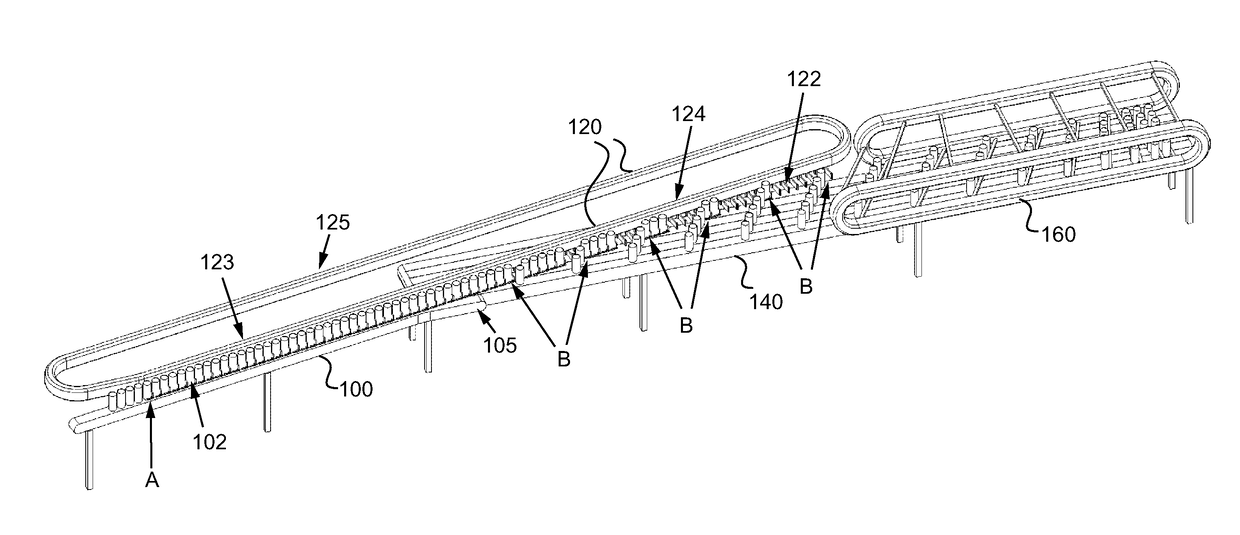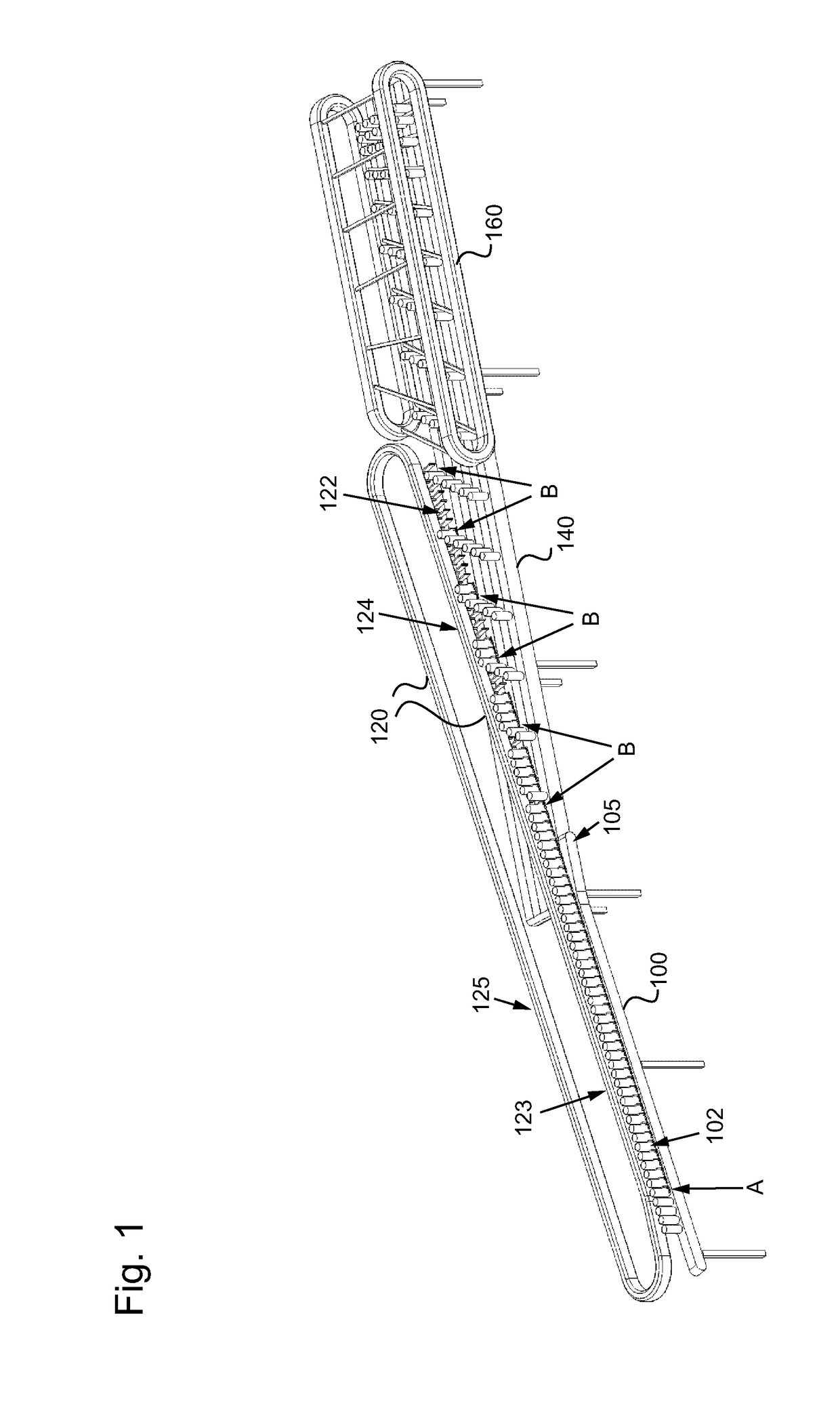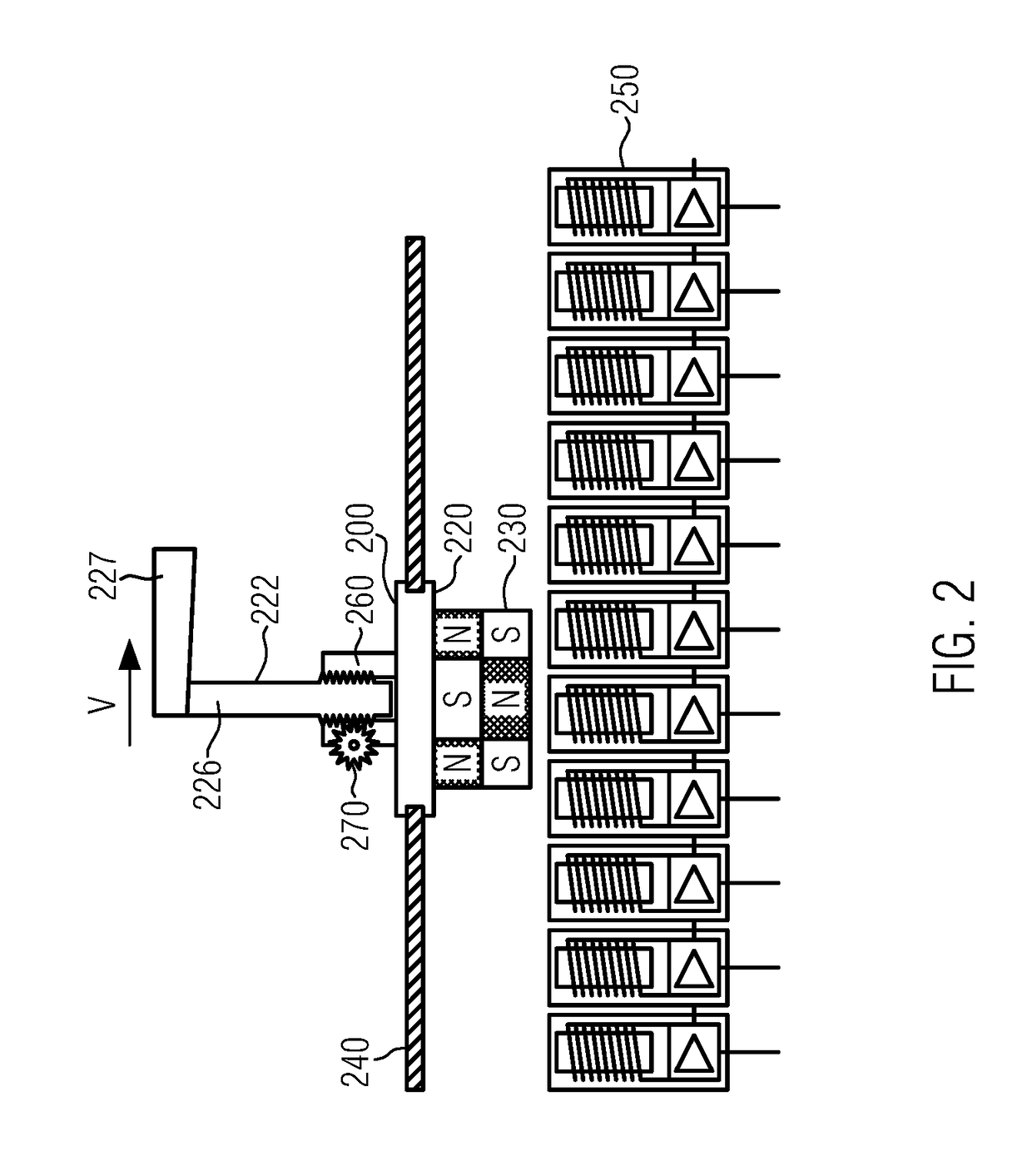Device and method for distributing and grouping containers
a technology for distributing containers and containers, applied in packaging, packaging, packaging bottles, etc., can solve problems such as risk of tilting, and unfavorable distribution and grouping of containers, and achieve the effect of avoiding slipping, avoiding slipping, and avoiding slipping
- Summary
- Abstract
- Description
- Claims
- Application Information
AI Technical Summary
Benefits of technology
Problems solved by technology
Method used
Image
Examples
Embodiment Construction
[0006]The above objects are satisfied by a device for distributing and grouping containers in a container treatment assembly, comprising: an infeed conveyor which is configured to convey a plurality of containers in a single-lane infeed flow; an outfeed conveyor which is configured to convey the containers away in multiple lanes; and a transfer conveyor associated with the infeed and the outfeed conveyor and having a plurality of circulating guide elements for the containers; where the transfer conveyor is adapted to separate the containers in a standing position by way of the circulating guide elements from the single-lane infeed flow to the multi-lane outfeed flow by selective guiding, in particular, by pushing them forward and / or decelerating them.
[0007]The containers can be cans, glass bottles or other glass containers with lids, plastic bottles, for example, made of PET, shaped containers such as e.g. rectangular PET containers, containers made of paperboard or the like. In par...
PUM
 Login to View More
Login to View More Abstract
Description
Claims
Application Information
 Login to View More
Login to View More - R&D
- Intellectual Property
- Life Sciences
- Materials
- Tech Scout
- Unparalleled Data Quality
- Higher Quality Content
- 60% Fewer Hallucinations
Browse by: Latest US Patents, China's latest patents, Technical Efficacy Thesaurus, Application Domain, Technology Topic, Popular Technical Reports.
© 2025 PatSnap. All rights reserved.Legal|Privacy policy|Modern Slavery Act Transparency Statement|Sitemap|About US| Contact US: help@patsnap.com



